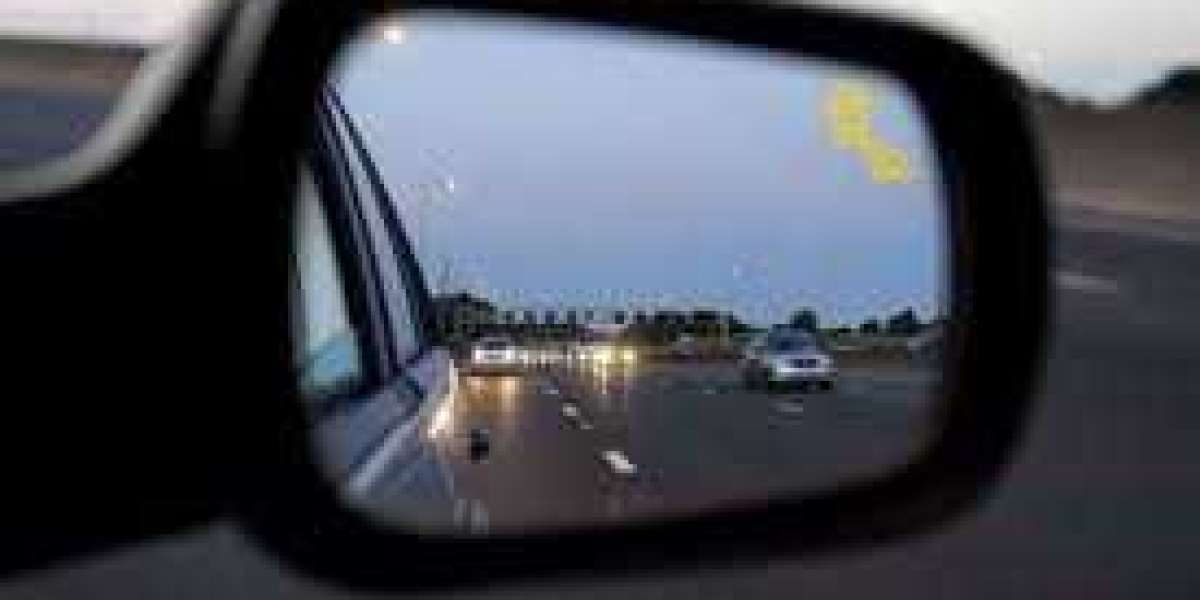The global blind spot detection system market is projected to witness a CAGR of 10.39% during the forecast period 2024-2031, growing from USD 3.51 billion in 2023 to USD 7.74 billion in 2031. The increased number of personal vehicles on the road and rising accident cases have given birth to new vehicle safety and security solutions. This includes adaptive cruise control, sensory data, and blind spot detection systems. Radar or ultrasonic sensors mounted on the side and back of the car are the basis for blind-spot monitoring. The device keeps an eye on the conditions of the vehicle's side and rear. Modern-age vehicles with higher speed limits and advanced radar systems are going to add value to the market. The systems alert or deliver warnings through automatic emergency warnings like visual and audio warnings. The advanced systems hold 180 degrees of coverage that reflect ultrasonic sensors and soundwaves for detecting any stationary and moving object. Governments across the globe are mandating safety measures as the number of road accidents tends to surge. New standard policies are being imposed on car manufacturers to make certain safety features compulsory.
Automakers are equipping their vehicles with the latest blind spot detection systems to counter accidental situations. Furthermore, upgraded versions of popular SUVs, hatchbacks, and sedans are also being fitted with the same. For instance, in November 2023, Maruti Suzuki started testing the new Swift 2024 in India. A blind spot monitor and an international spec with a suite of ADAS level 2 technology are fitted on the vehicle.
Higher Adoption of HCVs and Technological Advancements to Fuel Market Expansion
The blind detection system is more helpful for larger vehicles like SUVs and heavy commercial vehicles. Heavy commercial vehicles have complexity in changing lanes as the visibility is limited. Hence, blind spot detection systems help drivers navigate while shifting from one side of the road to another, monitoring both sides of the vehicles. Furthermore, BSD systems are more effective than mirrors, which still rely on drivers to do most of the watching and observing because they are proactive in alerting drivers to obstructions. More advanced systems can even interfere by subtly altering steering or applying brakes to stop drivers from changing lanes and running into other cars. Alongside this, the integration of artificial intelligence and other advanced technologies is anticipated to fuel market growth.
For instance, in February 2024, Brigade Electronics introduced Radar Predict, a cutting-edge side blind spot information system (BSIS) collision prediction safety system designed especially to shield bicycles from hit-and-run situations involving heavy-duty vehicles. Radar Predict uses artificial intelligence (AI) to analyze data, including the vehicle's speed and direction as well as the location of surrounding cyclists, to warn drivers of possible crashes.
Improved Overall Safety and Expansion of Commercial Fleets to Bring New Opportunities to Market
The rising trend of making commercial vehicles safer and secure through different technological measures is likely to help the blind spot detection system market expansion. Furthermore, the higher adoption of SUVs and other off-road sports vehicles demands AI-based blind spot detection systems. Blind spot monitoring devices also continuously track traffic. While driving on a multi-lane road or a freeway, people usually gaze forward and ignore blind spots. Blind spot monitoring improves overall safety by having sensors constantly detect traffic in front of, behind, and around the car. The expanding commercial fleet businesses, including transportation and logistics solutions, are heavily adopting trucks, loaders, and other goods-carrying vehicles. These vehicles cruise on highways along with high-speed vehicles, and hence safety, plays an important role.
For instance, in November 2023, Durite Ltd. introduced their new DVS Progressive Safe System (PSS) during the FORS Annual Conference. The Blind Spot Information System (BSIS), also known as the nearside detection system, is mandated by the new PSS to differentiate between moving and stationary objects and to notify the driver only in the event of an impending collision. PSS delivers an improved detecting area and fully eliminates blind spots by applying the intelligent AI (Artificial Intelligence) technology.
Radar Technology to Gain Major Traction in the Blind Spot Detection System Market
Based on technology type, radar technology holds dominance due to higher accuracy, quick response, and long-range detection. For outdoor long-range applications up to 40 meters, radar sensors are ideal. For increased accuracy, many radar sensors can also be adjusted to detect things up to a predetermined distance while rejecting closer items. Unlike photoelectric or ultrasonic sensors, radar sensors are unaffected by factors like wind, rain, fog, light, humidity, or air temperature. Accurate detection is the outcome with different settings. The radar systems have immunity to ambient weather conditions, including excess wind, dirt, debris, and potential for impact. Compared to other sensing technologies, radar sensors require less installation and maintenance.
For instance, in November 2023, Sensata Technologies launched a new Radar Sensor for blind-spot detection. A next-generation take-off and reverse blind-spot monitoring radar is designed to enhance driver awareness in on-road and off-road heavy vehicles and machines. Designed to be easily integrated into a wide range of vehicles, the PreView Sentry 79 is installed without any heavy modifications or interventions into existing systems.
Asia-Pacific Leads in the Market with Higher Ev Adoption
Asia-Pacific holds a decent share of the market. The factors attributed to the regional growth include emerging economies like China and India, which are building their automotive manufacturing and research and development space. The higher adoption of electric vehicles, along with local automakers building new systems to prevent vehicle accidents, will likely propel regional growth during the anticipated period. Furthermore, local manufacturers expanding their research facilities also garner market growth. The Asia-Pacific market is also widening due to the availability of low-cost raw materials and the mass development of this technology. The region's manufacturers create high-end applications to attract more customers and outperform their rivals.
For instance, in October 2022, Taiwan’s Oto Brite Electronics introduced the blind spot information system (BSIS) for large commercial vehicles. The product integrates with artificial intelligence to deliver a higher accuracy while detecting possible objects and vehicles.
Future Market Scenario (2024-2031F)
- A higher focus on vehicle safety, along with expanding fleet management businesses, is anticipated to consume a major chunk of the blind spot detection system market.
- The government mandating safety checks and measures in upcoming vehicles is projected to garner market growth.
- Integration with technologies like artificial intelligence and long-range radar systems is anticipated to widen the market hold.
- The adoption of ADAS and adaptive cruise control systems is expected to increase the demand for blind spot detection systems.
Report Scope
“Blind Spot Detection System Market Assessment, Opportunities, and Forecast, 2017-2031F”, is a comprehensive report by Markets and Data, that provides an in-depth analysis and qualitative and quantitative assessment of the current state of the global blind spot detection system market, industry dynamics, and challenges. The report includes market size, segmental shares, growth trends, opportunities, and forecast between 2024 and 2031. Additionally, the report profiles the leading players in the industry mentioning their respective market share, business model, competitive intelligence, etc.
ClickHere:https://www.marketsandata.com/industry-reports/blind-spot-detection-system-market
About Us:
Markets and Data provides a comprehensive/ panoramic understanding of markets at global, regional, and country levels. Examine changing consumer preferences, emerging challenges, underlying trends, and growth prospects to accelerate your business strategies.
Contact
Mr. Vivek Gupta
5741 Cleveland street,
Suite 120, VA beach, VA, USA 23462
Tel: +1 (757) 343-3258
Email: info@marketsandata.com
Website: https://www.marketsandata.com








